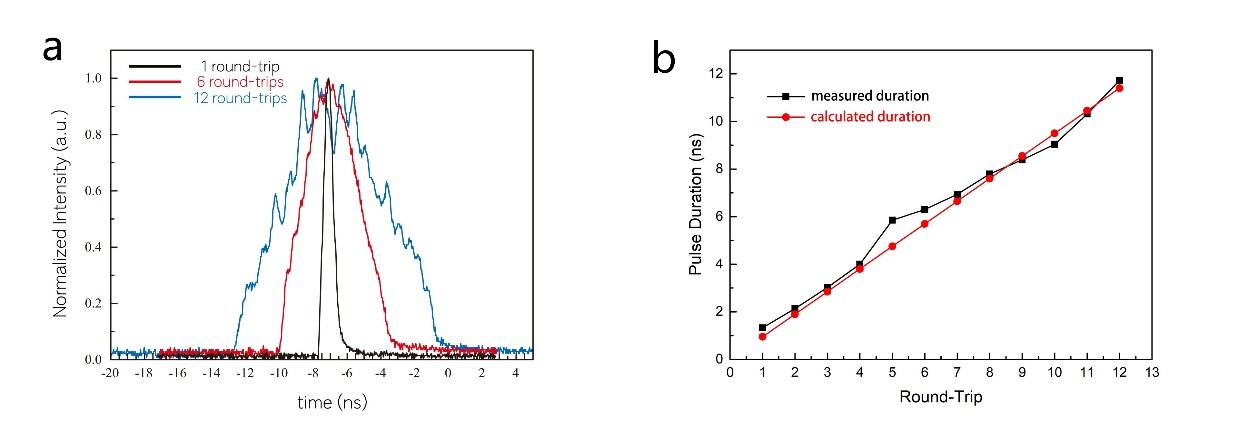High energy and ultrafast laser pulses can create extreme physical conditions and are very important in many research fields such as inertial confinement fusion (ICF) and laser-induced X-ray generating. Chirped pulse amplification (CPA) is one of the main technology methods to achieve ultrafast high-energy laser pulses. The main idea of CPA technology is to first stretch the ultrafast laser pulses from tens of femtosecond to picosecond or nanosecond, which are then amplified in the laser amplification modules. The amplified laser pulses are then compressed back to femtosecond. Duo to the limited amplification bandwidth in the stage of pulse energy amplification, the temporal pulse width will shrink, which will set a limitation for the pulse amplification.
A research team led by Professor LENG Yuxin from State Key Laboratory of High Field Laser Physics, Shanghai Institute of Optics and Fine Mechanics of the Chinese Academy of Sciences, has introduced a brand new method to achieve multipass stretching for ultrafast laser pulses.
The multipass stretching system combines the concept of regenerative amplifier and a Martinez-type stretcher. One of the reflecting mirrors in the traditional regenerative amplifier is replaced by the Martinez-type stretcher. By controlling operation duration of the Pockels cell, researchers can maintain the polarization of pulses and let the pulses circle in the cavity. Therefore, the pulse will pass through the stretcher repeatedly and accumulate dispersion until the Pockels cell are turned off.
In this setup, they achieve longer stretched pulses based on limited-size of optical components without changing the layout. Following theoretical calculation, the system has a stretching ratio of 0.93ns every round. After 12 rounds in the multipass stretcher, a 11-ns chirped pulse is achieved, which matches very well with the theoretical calculation.
By stretching the femtosecond seed laser to a longer pulse, this research may provide a new method of stretching in the CPA system and promise a longer chirped pulse and a higher gain in the following amplification.
The work, entitled “Multipass stretcher for chirped-pulse amplification”, was published in High-Power Lasers and Applications on November 5.

Figure (a) The stretching process from 1 round-trip to 12 round-trips (b) The relationship between the measured and calculated pulse duration and the round-trip
Contact:
Mr. Cao Yong
General Administrative Office
Shanghai Institute of Optics and Fine Mechanics, CAS
Email: caoyong@siom.ac.cn